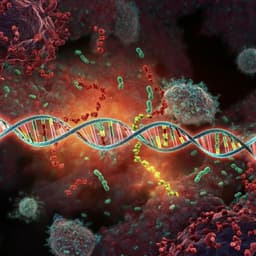
Medicine and Health
Transplacental transmission of SARS-CoV-2 infection
A. J. Vivanti, C. Vauloup-fellous, et al.
This groundbreaking research reveals the transplacental transmission of SARS-CoV-2 from mother to neonate during the crucial last trimester of pregnancy. The findings document a correlation between maternal viremia and alarming neurological symptoms in the newborn, confirmed through advanced virological and pathological investigations. Discover the implications of this work by Alexandre J. Vivanti and colleagues.
Playback language: English
Related Publications
Explore these studies to deepen your understanding of the subject.







